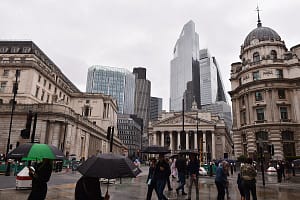The European Banking Authority (EBA) has conducted a “stress test” of 123 European banks, simulating what would happen to them if there was another financial crash.
Some 24 of the banks failed the test – around one in five of all those tested – because they lacked the capital buffers needed to withstand the fictional crisis, as their finances stood at the end of 2013.
The banks that failed faced a total shortfall of €24.6bn.
At least 10 of those banks have, however, built up their balance sheet since the end of 2013.
So how did the UK fare?
All the big four UK banks – Barclays, HSBC, Lloyds and RBS – passed the EBA’s test, with a capital buffer of more than 5.5%.
Lloyds was the closest to the benchmark, with a 6.2% buffer, then RBS at 6.7%, Barclays at 7.1% and HSBC at 9.3% under the circumstances simulated by the EBA.
Italy came out worst in the test, with four banks failing. Worst-off was the Italian bank Monte dei Paschi, which was €2.1bn short of the benchmark the EBA deemed safe.
Greece, Belgium and Slovenia each had two banks that failed the test.
The European Central Bank also carried out a similar test on 130 eurozone banks, which 25 failed.
The BBC reports that 12 of those have already taken measures to build up their capital reserves.
NOW READ:

Deficit grows as government spending is up 10%. Is the economic plan still working?








Leave a Comment